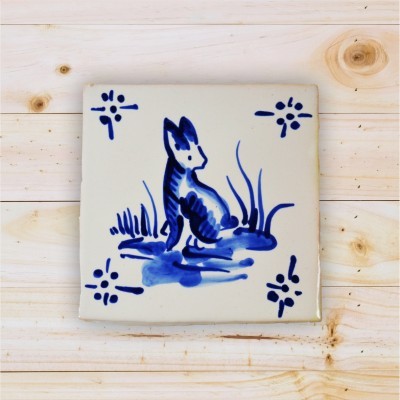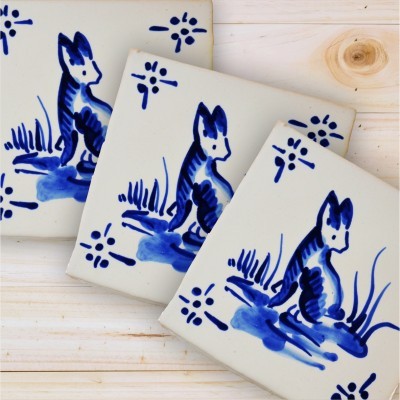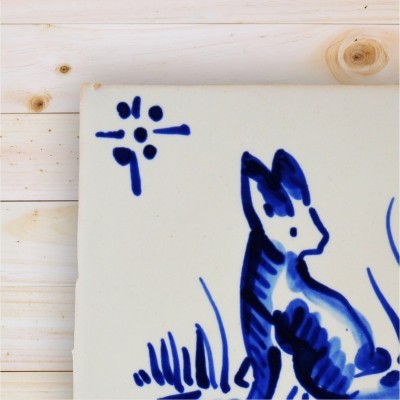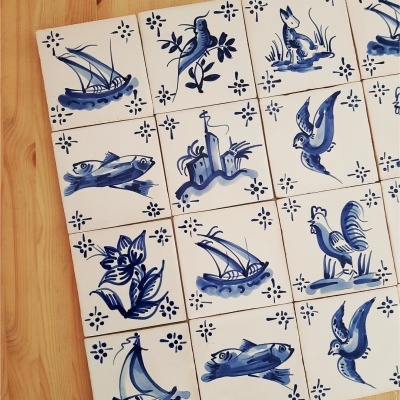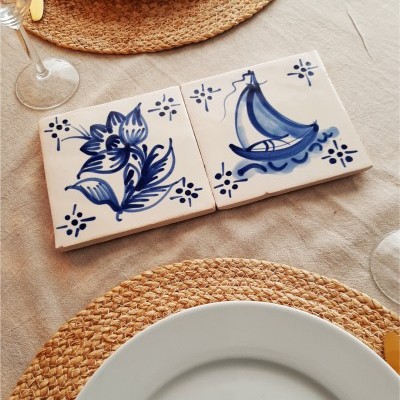Portuguese blue tile, Hand Painted, replica of 18th century, Rabit
18th Century replica tile
Each tile represents a single composition (flower, animal, etc., or even a description of more complex scenes). In Portugal during the 18th century, the plain blue figure kind with decorative elements in corners to help the visual unity between the various tiles became more popular. Placed especially in kitchens and staircases, they are also applied in the religioous architecture.Hand painted individually in handcraft, according to the traditional - processes and techniques of 18th century
Size square - 14cm x 14 cm
Back with 4 mm cork
Is there a bluer country than Portugal? The blue sky and Atlantic Ocean embrace the land. The blue moods of Fado, the melancholy folk music, form the national soundtrack. And all across Portugal, the typically blue designs of azulejos — ceramic tiles — are spread across churches, monasteries, castles, palaces, university halls, parks, train stations, hotel lobbies and apartment facades. The result is an embellished land of Christian saints, biblical episodes, Portuguese kings, historical glories, pastoral idylls, aristocrats at leisure, landscapes, seascapes, floral designs and, above all, geometric motifs.
in New York Times " 12 Treasures of Europe"
Can be used as a decorative element on the table or on the wall, or as a pot holder on the tabledecor
Do not buy tiles stolen from the walls. Our tiles are faithful replicas. Our mission is to save our heritage of portuguese azulejos.


